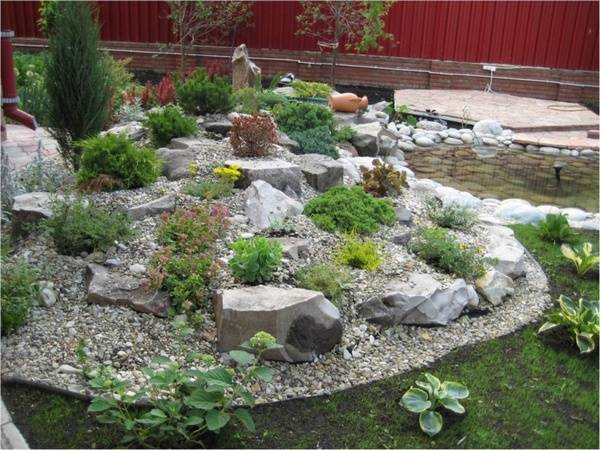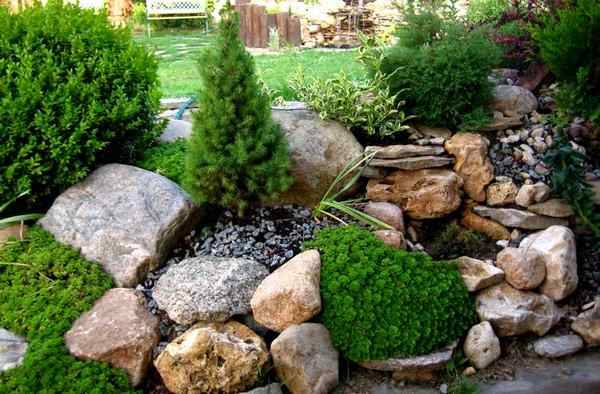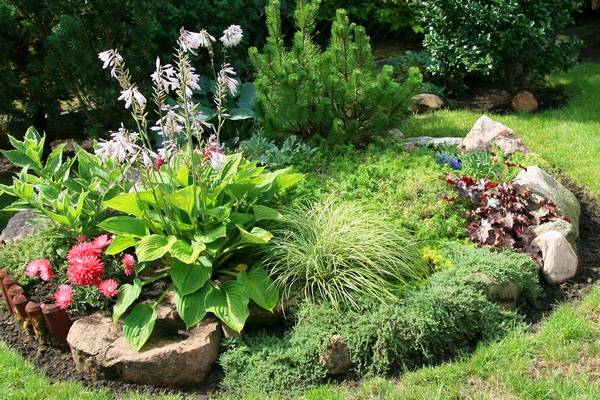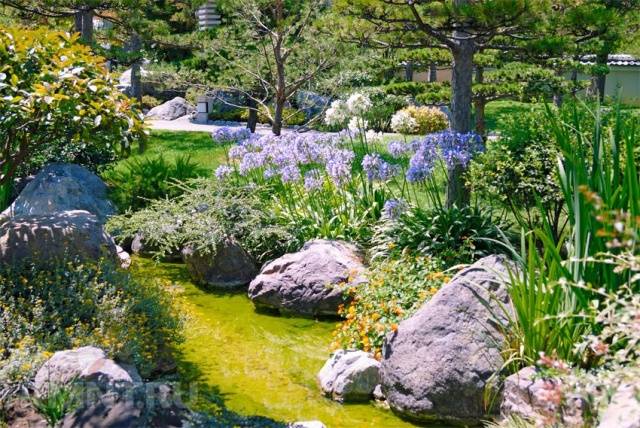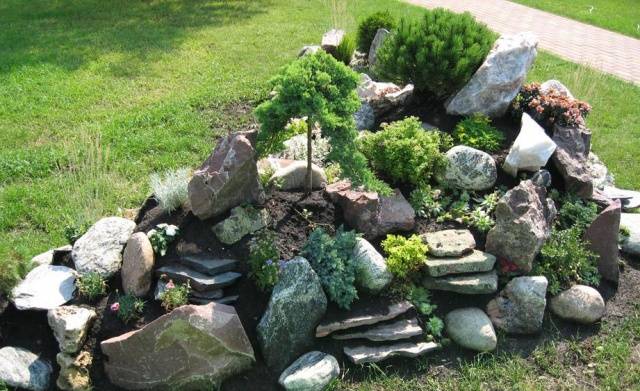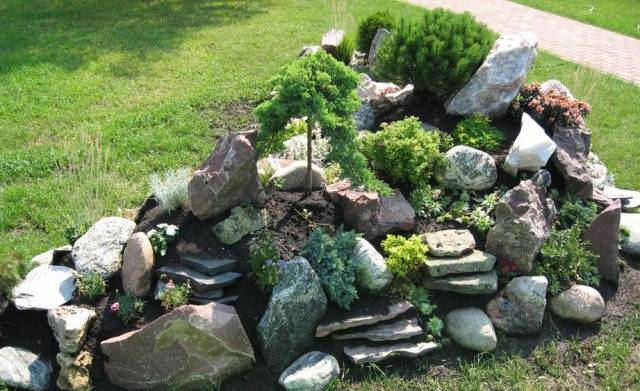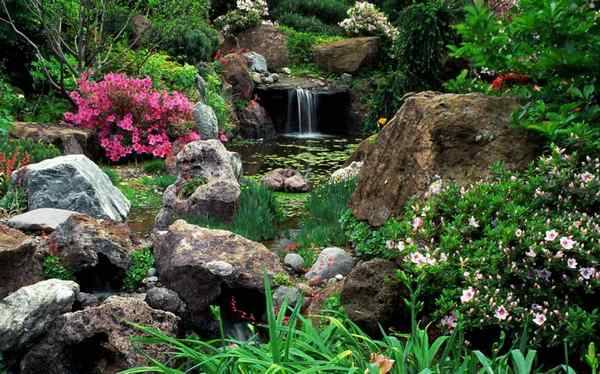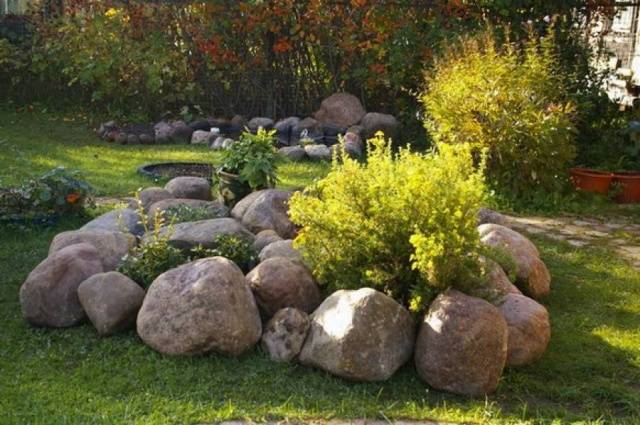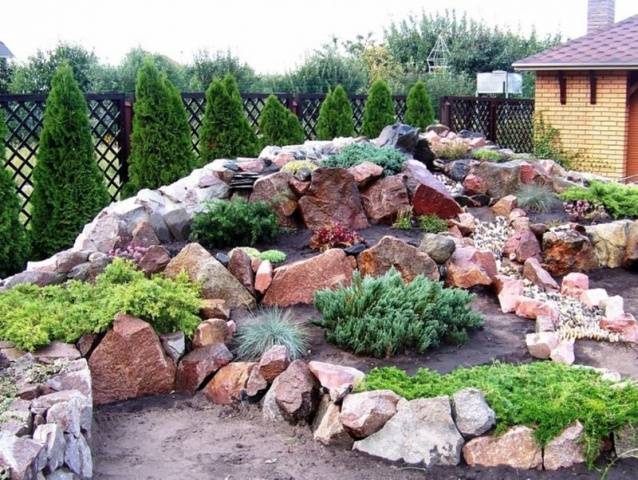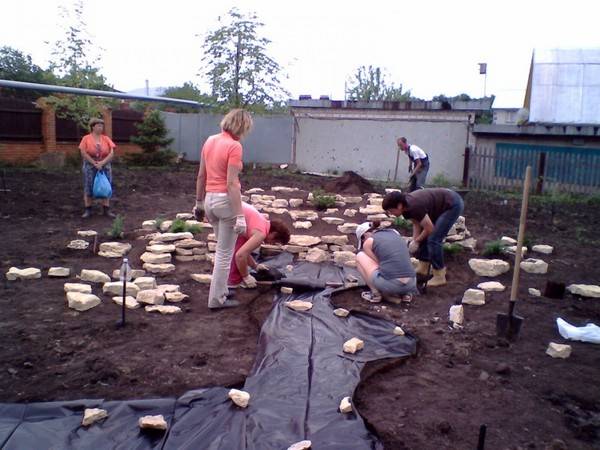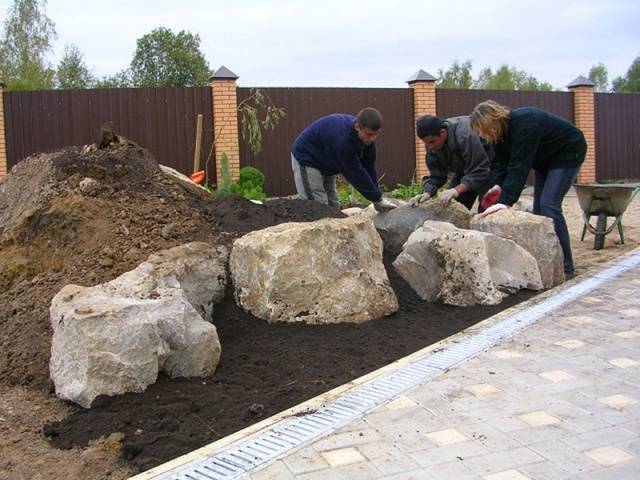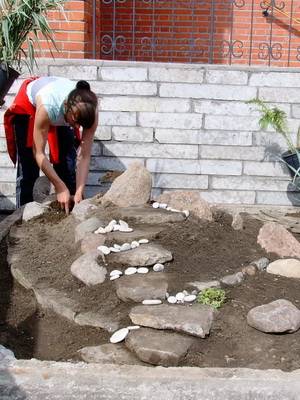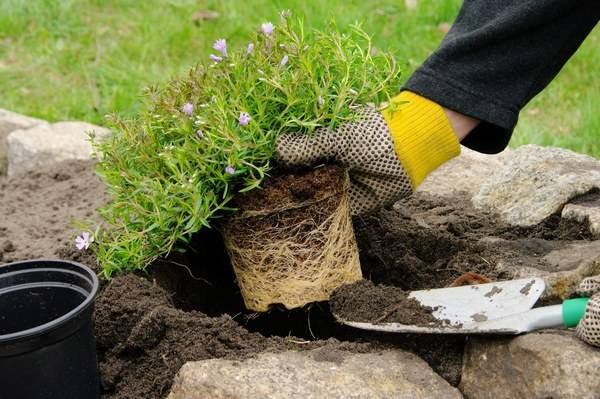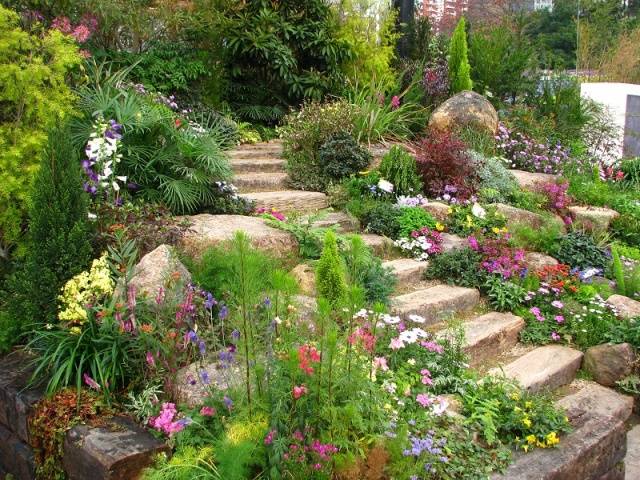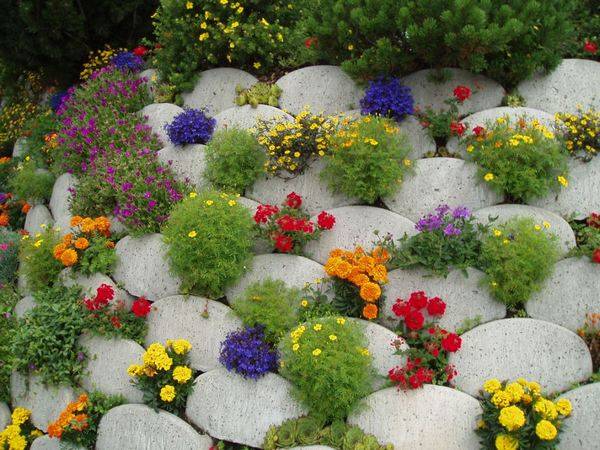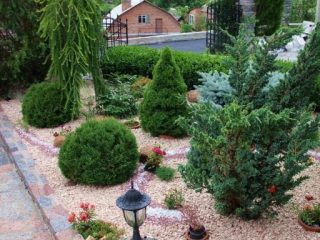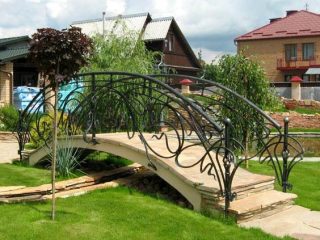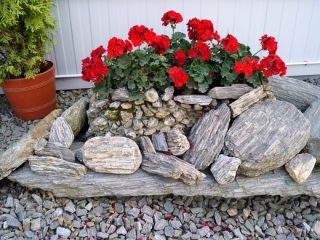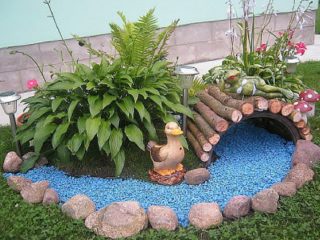Content
To build a rockery with your own hands in the country is not as difficult as it might seem at first glance. Usually landscape designers deal with these issues, but having some skills, it is quite possible to create a rockery yourself.
How rockeries are used in landscape design, how to create your own rocky garden and what features of this composition must be taken into account first of all - all this is in this article.
What is rockery and what is it for
Modern landscape designs simply amaze with the variety of artificial structures, the abundance of outlandish plants and their combination. These are alpine slides, and ponds, and fountains, hedges and bizarre shapes. shrubs... All this is intended to attract the eyes of others, but the main purpose of landscape compositions is visual aesthetics. The garden should please the eye of the owner of the site and his guests at any time of the year.
So, rock gardens are usually decorated with cultures inherent in the mountainous Alps. Whereas in rockeries, you can use any plants that the owner likes best.
In fact, a rockery is a rocky garden. The predominant part of the composition should be made from boulders, stones, stone backfill. Plants in this case only serve as a decor for an installation made of minerals, their role is to dilute the too dull stone landscape.
For this reason, lush shrubs, too bright flowers or dwarf trees are not used in rockeries. All this can be safely left to the rock gardens. For rockeries, saxifrage plants, weaving crops that can twine around stones, exotic compact bushes that delight with unusual greenery throughout the season are more suitable.
How to make a rockery with your own hands
In order to create a rockery in the country with your own hands, you need to analyze the whole process of building this composition in stages. Of course, it is much easier to seek help from a qualified designer, but this pleasure costs a lot of money. In addition, many summer residents simply enjoy working with the land and plants, so creating rockeries will give them a lot of pleasure.
First of all, rockeries require site preparation. The first plot in the garden is not suitable for this composition. The placement of rockeries should be thought out very thoroughly:
- It is not built in the immediate vicinity of the house.... Firstly, a stone garden should be located against the background of nature, and not a monumental building. And, secondly, rains and snow falling from the roof of a house can damage the structure, wash away the soil, contribute to the shrinkage of stones and the death of plants.
- You should also not place rockeries near large trees., against their background, small compositions run the risk of getting lost. In addition, foliage from trees will constantly cover the stone garden, which will require a lot of effort to clean it.
- The best option is install rockery in a well-sunlit areaby placing the slopes of the structure so that most of it is on the shaded side. It is best if the long slope is oriented southwest or southeast.
- You should not give up the construction of a stone garden on a small plot. Small, compact rockeries look no worse than spacious stone slopes... Having picked up dwarf plant species for a miniature composition, it will turn out to create a unique masterpiece.
- If the only place where you can install a rockery is a corner near a fence or an outbuilding, you can go for a little trick. Namely - plant climbing plants against the wall of the buildingby choosing those varieties that have a decorative appearance throughout the year. Against the background of greenery, rockery will look advantageous and natural.
Choosing stones for rockeries
Rockeries are different, some use inconspicuous gray stones of approximately the same size, while others use contrasts, combining calm background shades with bright blotches of other rocks.
The choice of stones can completely depend on the tastes and preferences of the owner of the garden.... According to the rules, rockeries are divided into three types:
- English garden... Such a composition involves the use of gray or beige stones with sharp edges, decorative crushed stone powder and a simple geometric shape of the base. Here, most often, perennial conifers are planted: shrubs or dwarf trees. Frequent "guests" of the English rockery are cereals and bulbous crops. They are sometimes combined with saxifrage and climbing plants. The main rule of English rockery is durability. This design should please not only the current owners of the site, but also their descendants.
- Rockery of the European type, first of all, should be comfortable. That is, to require a minimum of time and money for maintenance and care. Stones in such compositions, most often, they have a rounded shape - these are pebbles or forest boulders. It is allowed to install one or two large minerals with sharp edges, a combination of contrasting shades and various rocks. Of the plants, Europeans use local crops, accustomed to climatic features and soil composition, providing lush flowering and bright colors. Caring for such a rockery is not difficult at all. If you choose the right plants, having thought over the time of their flowering, you will only have to water the rockery on time.
- Japanese gardens impressive by the predominance of stones over plants. The whole construction here is based on the layout and combination of stones. Very little attention is paid to greenery, flowers and herbs should not distract attention from the contemplation of the stone composition. Most suitable are saxifrage, weaving grasses, compact bushes. Japanese rockery is supposed to evoke pacification - this is its main purpose.
The stone selection guide boils down to just a few simple recommendations:
- The stones should have an interesting shape - they can be porous stones, cobblestones with spectacular cracks, boulders overgrown with moss, brought from the forest or black stones collected on the seashore.
- The color combination of stones depends entirely on the wishes of the owner. For people with excellent aesthetic taste, it will not be a problem to effectively combine minerals of different shades into a single composition. For those who are afraid of mistakes, the best option would be to use stones of the same breed and shade. In this case, you can play with the shape and size of the stones.
- Rockeries with one or two central large stones look best. The bulk of the minerals should be about the same size (about 35-40 cm in length or width).
- Any stones can be used for construction, the only requirement is that they must be strong to withstand moisture, sun and time.
- If very large stones are chosen for rockeries, you will have to take care of special equipment, with the help of which they can be delivered to the dacha and installed in the designated place.
Assembling rockery
Step-by-step instructions for creating a rockery with your own hands looks like this:
- The place chosen for the structure must be cleaned of weeds and other rubbish.
- Remove the top layer 10-15 cm deep from the soil. If the soil on the site is depleted, it is better to remove it and replace it with fertile soil or a purchased mixture. In this case, you will have to remove up to 40 cm of soil.
- The roots of weeds, shrubs and trees are carefully removed from the soil.
- The site is covered with geotextiles or plastic wrap. This will prevent the growth of weeds, the penetration of roots, which can move stones and destroy rockery.
- Due to the fact that the natural drainage of the soil is disturbed by the film, it is necessary to create an artificial drainage system. A layer of crushed stone, broken brick or slag is poured onto the bottom of the excavated recess. All this is sprinkled with coarse river sand.
- Now soil is poured, the height of this layer completely depends on the design of the rockery and its project. After laying, the soil is compacted very carefully. Ideally, leave the rockery in this state until the next season (better for the winter), then the earth will settle naturally.
- The stones are set according to the plan. Under the largest boulders, it is necessary to pour a cushion of rubble or even cement their base. This will protect against the inevitable sinking of heavy stones.
- They pour soil between the stones and tamp it a little with your hands.
- Plants can now be planted. They are selected in advance, at the design stage for each of them, the location is determined. It is best to pour the fertilizer necessary for this particular variety, soil or a growth accelerator into the hole for a separate flower - that is, to make the transplant as comfortable as possible for flowers.
- The last step is to water the entire rockery.
Tips & Tricks
Each novice gardener may have a number of questions during the construction of a rockery, we will try to answer the most frequent of them:
- Step-by-step photos, video instructions and advice from the "experienced" will be of great help.
- It is not necessary to buy stones for your rockery - you can easily find them “under your feet”. This will be especially easy for those who live near the sea or fresh water body, such stones are not afraid of moisture and have sufficient strength.
- There is no need to arrange the stones symmetrically - the rockery should look as natural as possible. It is best to start laying from the highest point of the structure, moving the stone relative to the center with each tier.
- Rockery, in which the gaps between stones and plants are filled with pebbles, decorative gravel or large sawdust, will look beautiful and well-groomed. Among other things, this will prevent the growth of weeds.
- For the winter, it is better to cover rockeries with a film or other material, this will protect both the plants and the structure itself from erosion and destruction.
- The plants chosen for the decoration of the composition should not exceed a height of more than 50 cm. Flowers on long stems, crops with minimal foliage do not look very beautiful here. Preference should be given to perennials, which have a presentable appearance all season.
It is not difficult to create a rockery with your own hands, it does not require a lot of money and time. All that the owner of the dacha needs is a clear plan, some stones and seedlings of your favorite flowers.
